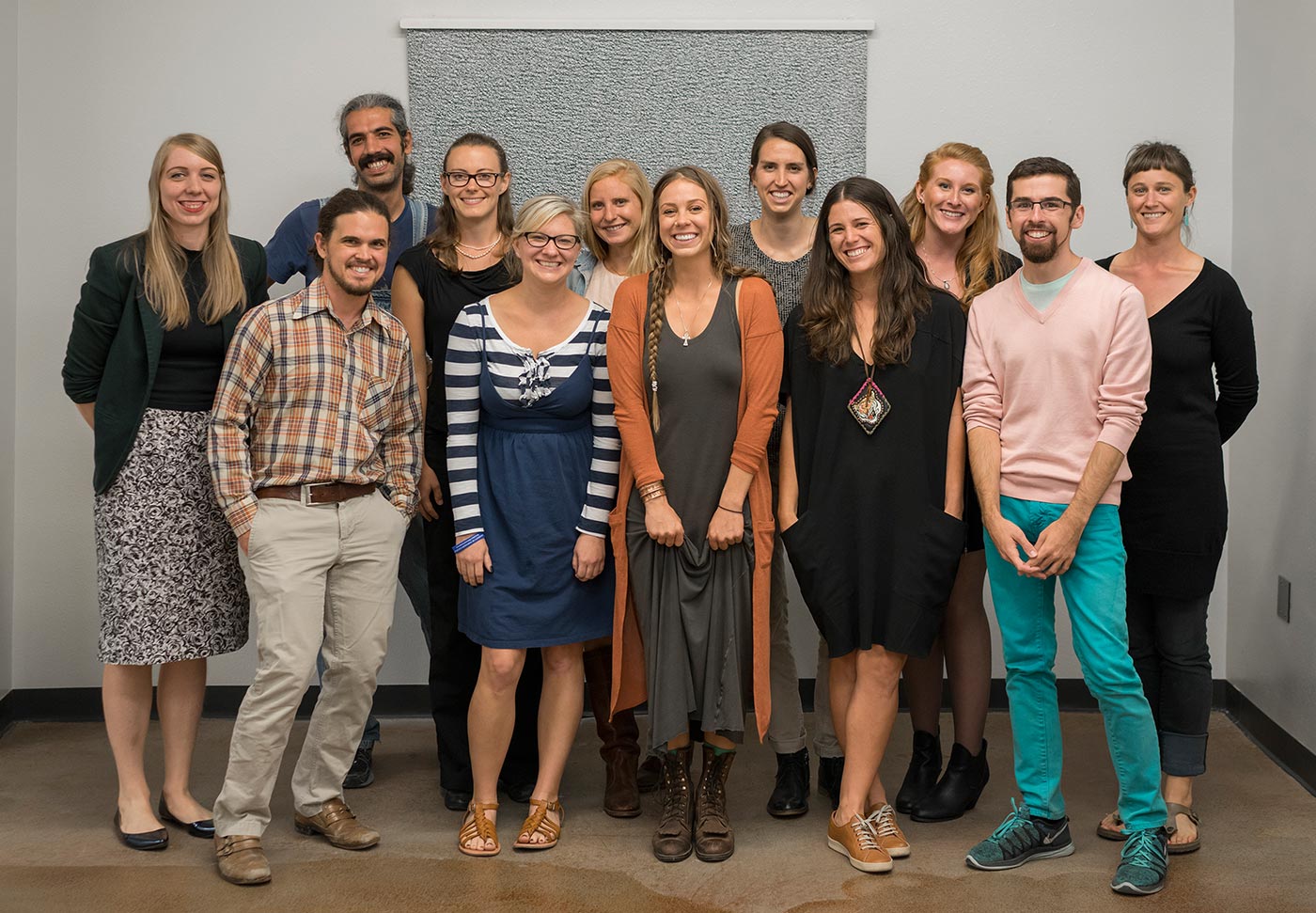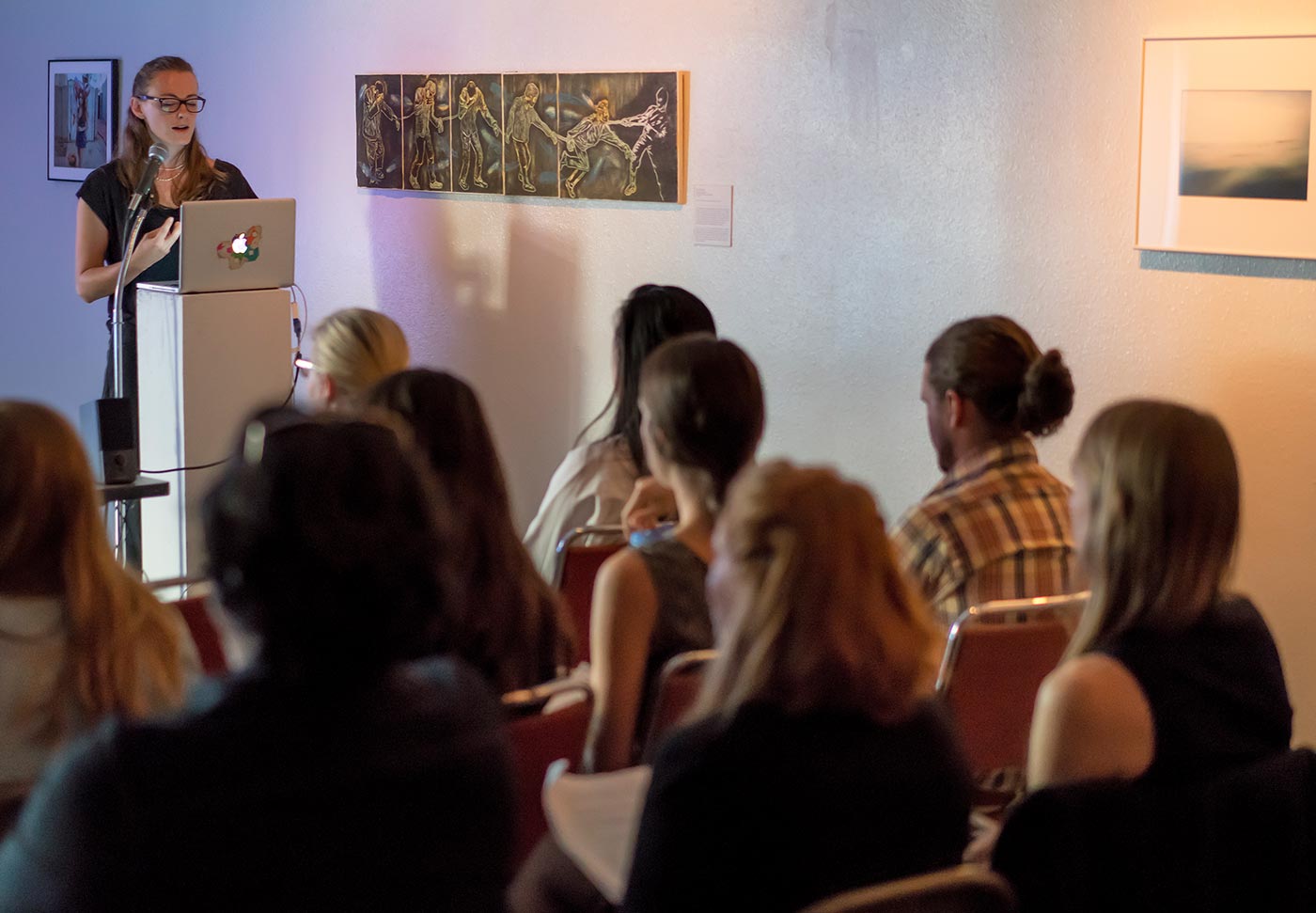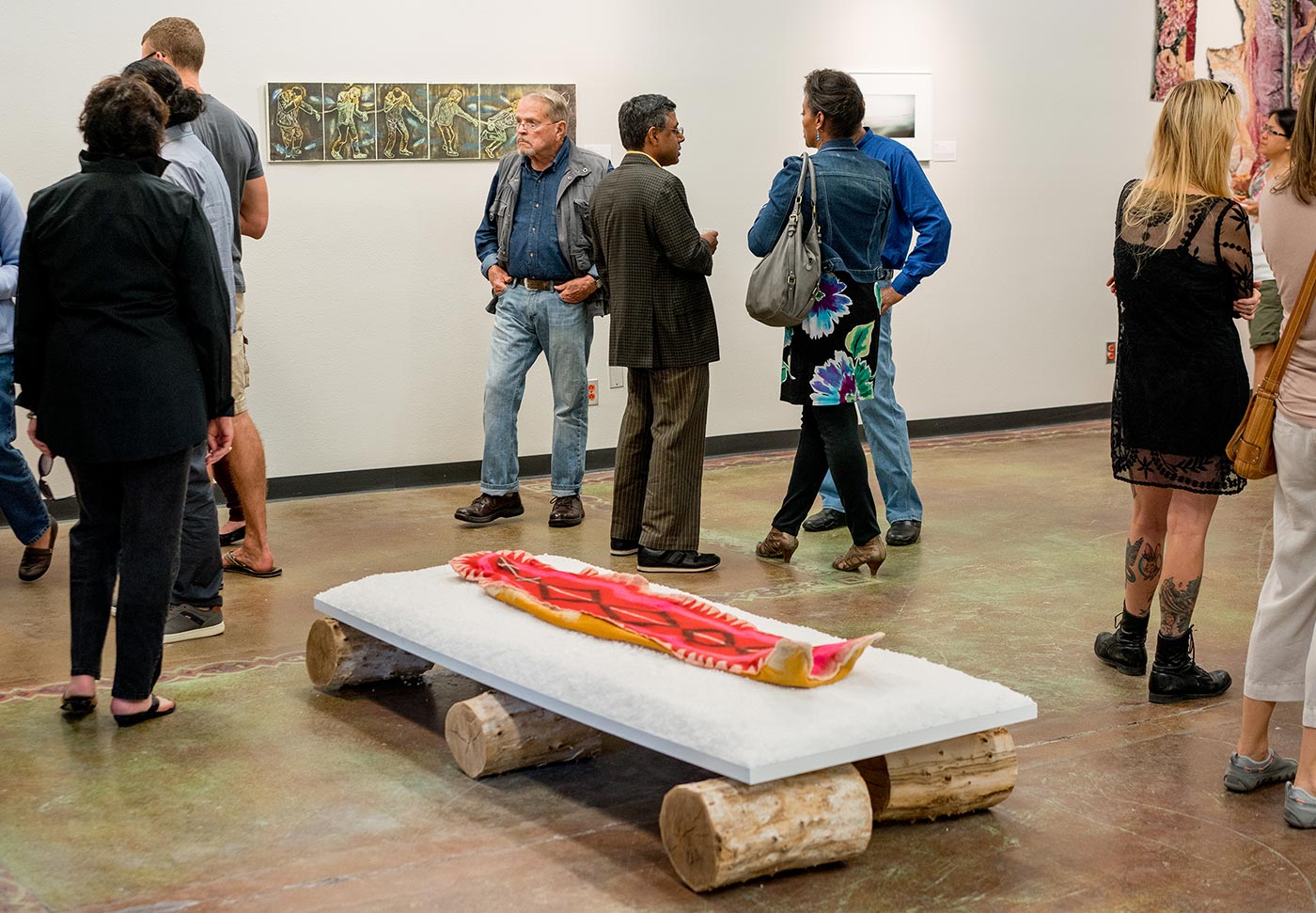
2015 At First Sight Exhibition Review
by Art History MA student Chloë Courtney
September 13, 2015
At First Sight, an exhibition of works by entering MFA candidates, opened Friday August 28, with GAA-sponsored opening reception taking place Friday, September 4 and artist talks on September 8. While the exhibition serves as the students’ debut as members of the MFA program, it is also a celebration of the talent and skill of the entering students, and of the supportive community of the Department. The opening reception in particular seemed to provide a metaphorical communal blessing of the artists and their work as they begin their journey in graduate studies.
Works on view utilize a variety of media and formats, including photography, sculptural installation, found objects, printmaking, drawing, and textiles. However, MFA candidate James Meara’s curatorial arrangement of the exhibition, as well as the works themselves, deconstruct rather than enforce the traditional categories and conventions of genre. For example, Nicholas Simko’s The Power to Choose manifests a photograph as a tapestry with frayed edges and a vulnerable materiality not usually associated with the unassailable authority of photography, while Charis Fleshner’s richly layered collage Emerging Nest II verges on the sculptural, perhaps in communication with Kaitlin Bryson and Elizabeth Wetzel’s nearby installations.

As a whole, the exhibition invokes the ideas of ritual and habit, both as elements of the artists’ processes, and as part of human society. For example, Ariel Wilson’s installation The Junkyard: A Series of inferences and constructions, No. 7 catalogues the physical detritus of an abandoned car using found objects, photographs, and texts that fall somewhere between anthropological notes and diary entries. She seeks the essence of the car’s driver through the physical remnants of habitual behaviors associated with cars including driving, smoking cigarettes, and spending time with loved ones. As such, Wilson draws out the significance of these quotidian rituals, identifying in them a significance that can be studied and preserved in an academic way. With a similar attention to the related notions of action and ephemera, Kaitlin Bryson’s sculpture, As Above, So Below commemorates the ritual of honeybees, who yearly expel their dead from the hive. The conical tomb she constructs for the dead bees invokes both the modular, repetitive geometry of a beehive and the ornamented yet logical structure of a gothic cathedral. This formal similarity and the implied ritual of mourning shared by humans and bees serves as a vanitas more oriented to humans’ relationship to the earth than to the afterlife.
In addition to the presence of ritual and habit as themes, environmental considerations are also a central concern of the exhibition. Several works consider the materiality of the natural world, and the effect of people on that environment. Molly Zimmer’s work Overburden presents a visceral, tactile representation of human excavation of the earth, while Hollis Moore’s Don’t Feed the Birds, Galapagos I and II presents a dense visual landscape that seems impenetrable to human intervention. Kristen Roles’ photograph similarly considers human agency within environments, although she utilizes constructed environments. Her presence in the work Few and Far Between disrupts our expectations as viewers by actively engaging with the constructed environment rather than with the viewer’s gaze.

Although the works the artists exhibit in At First Sight derives from experiences prior to joining the MFA program, the exhibition nevertheless reveals underlying concerns shared by the incoming MFA students—concerns that Meara undoubtedly elicited in his curatorial process. The dialogues happening between works in the exhibition perhaps foretell productive dialogues amongst this group of entering MFA students. In the months and years to come, it will be enlightening to see how the art community and working environment of our department will influence and shape their work.